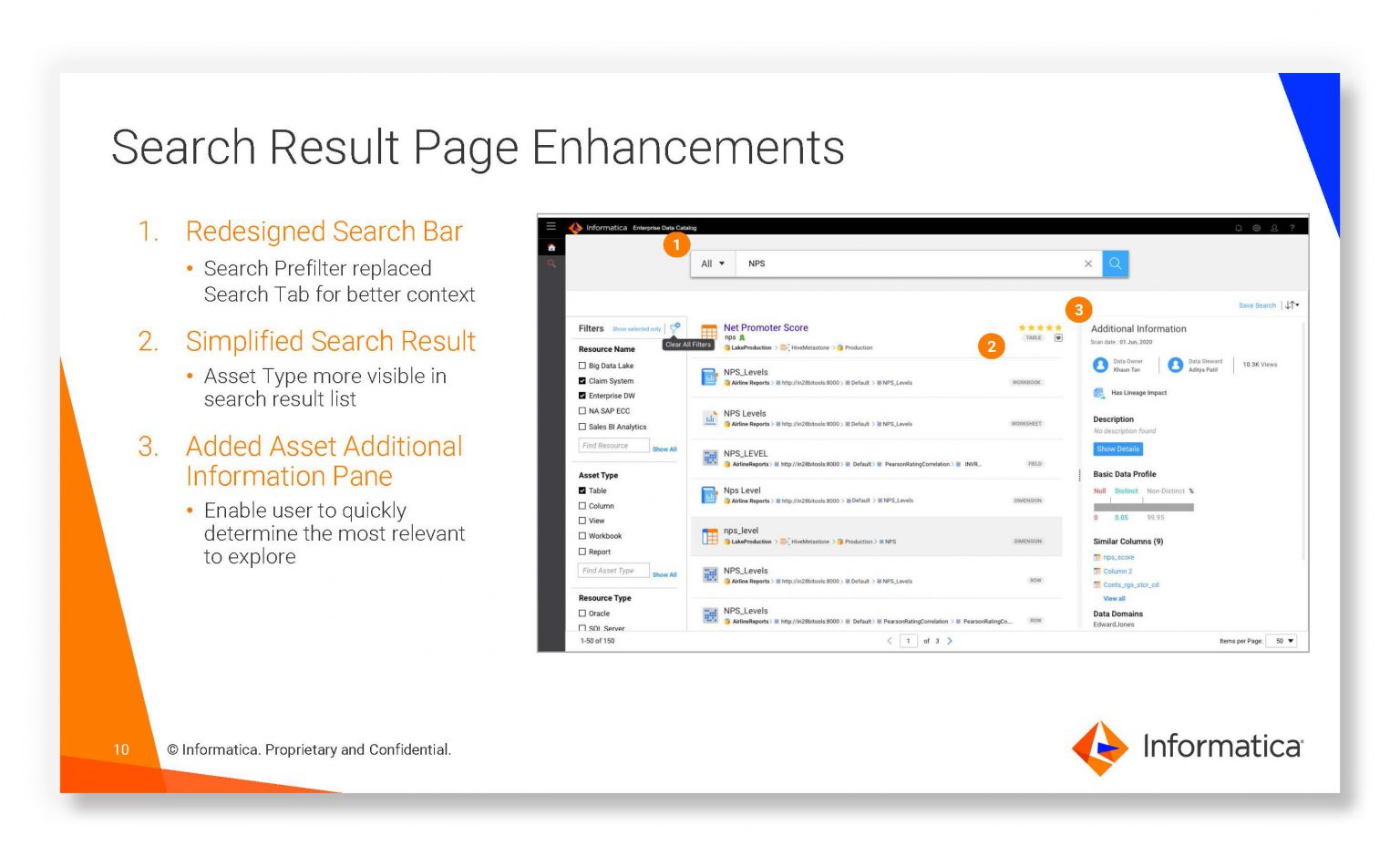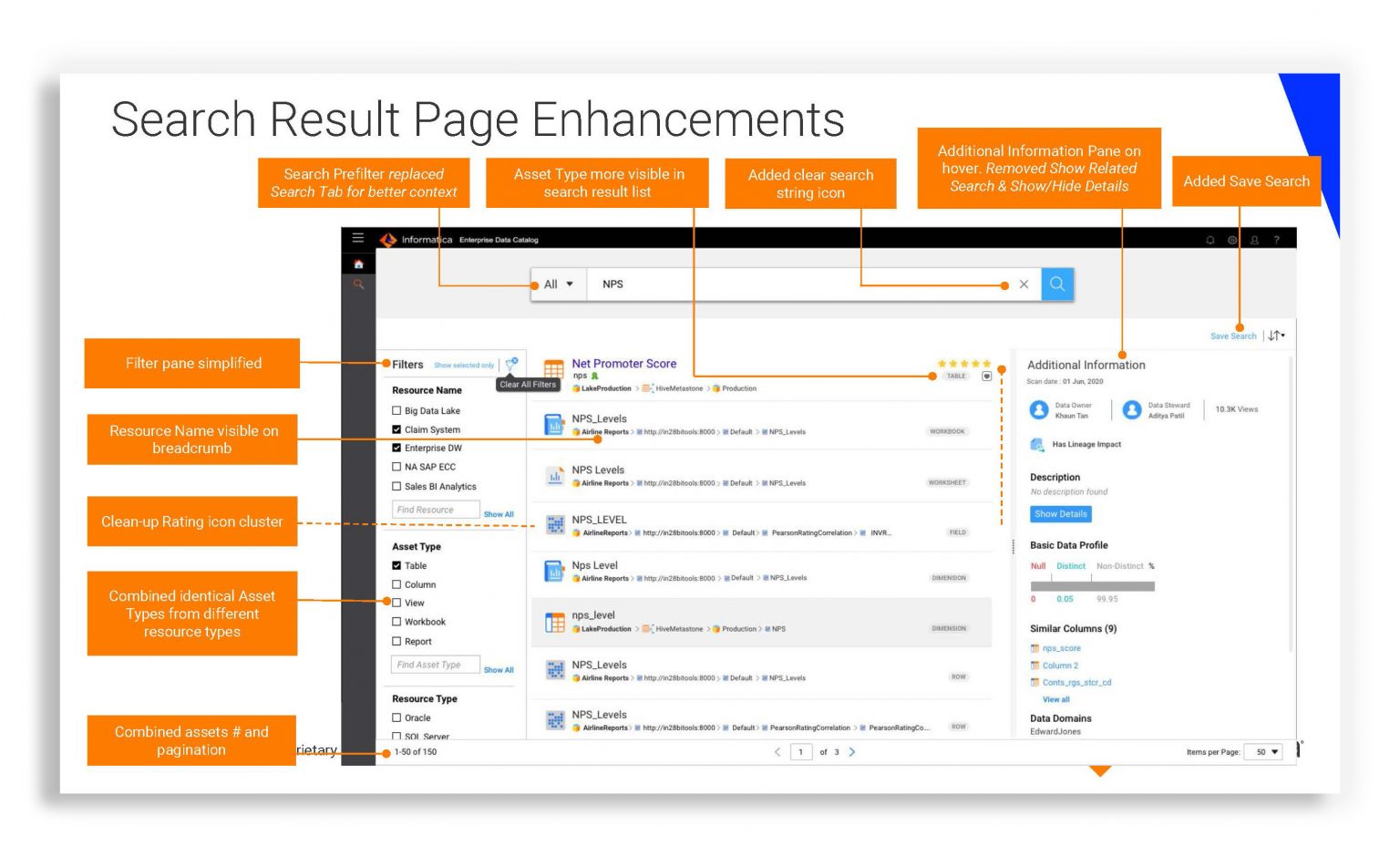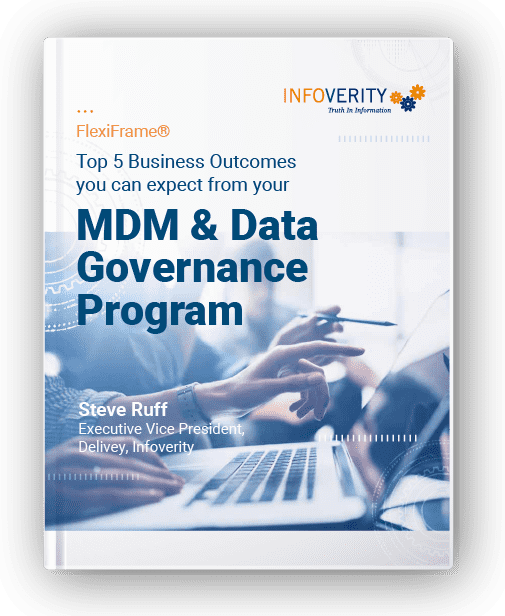Informatica customers may have noticed a major change that occurred earlier this year. As of March 2022, Informatica’s Enterprise Data Catalog (EDC) 10.5.X is now the only fully supported version. Additionally, businesses running earlier versions of the EDC are now missing out on the new set of features included in the 10.5.X release while running the risks associated with using an unsupported version.
Business Value Benefits
Search Improvements


Better Business API
Self Service Learning
The upgrade helps newer users with an expanded list of walkthroughs, bolstering adoption by enabling users to better understand and fully utilize the capabilities of the software. This functionality is like the “wizard” help functions seen in other software. From the catalog end user and administrator interfaces, expanded walkthroughs are provided that give step-by-step instructions of basic functionalities in the tool which can help reinforce the purpose and intended uses of the catalog and greatly benefit adoption efforts for new users. This also takes the pressure off of administrators and owners of the application who currently are expected to teach the enterprise about their new tool for data governance.
Operational Benefits
Increased Stability and Ease of Use
Shift From Hadoop to MongoDB
Tactical Benefits of a Better Platform
The new architecture has broad implications, improving EDC 10.5.X in a variety of ways that make the data catalog much easier to run and operate. These improvements, detailed below, free up IT support and administrative users to focus on making the data corpus better and increasing business value, rather than spending time on running the tool:
- Enhanced security and authentication: With EDC 10.5.X, companies are able to bring the system more in line with their overall security and authentication policies. In the past, it was difficult to implement additional layers of security in the EDC to meet the demands of existing security models. In EDC 10.5.X, Informatica has provided additional utilities to support enabling TLS encryption throughout the application, thereby simplifying the process for IT teams to implement their own certificates for encryption.
- High Availability (HA) architecture: EDC 10.5.X supports an optional HA architecture to make the application robust and resilient to common failures. By adding an expanded hardware infrastructure, EDC customers can implement automated failover so that companies never lose access to the environment.
- Expanded Scanner Footprint: Informatica continues to add supported scanners in new releases, such as Profiling scans on Databricks. Following the acquisition of Compact Solutions in July 2020, 10.5.X incorporates Advanced Scanners, previously only available through a third party, to the core platform. This makes it easier to leverage expanded scanner capabilities, such as ability to parse SQL code, and include transformations and more detailed lineage in data flows.
- API Enhancements: EDC 10.5.X also offers expanded API functionality, which supports companies looking to shift to more API-driven approaches. By leveraging EDC’s API, companies can build out content faster, customize their experience easier, and allow the team that’s managing the application to have a broader range of control.
- Data Asset Analytics: EDC 10.5.X provides greater insights into cataloged data assets and adoption metrics than previous versions. Analytics are available on data asset inventory, usage, enrichment, and user collaboration within the organization’s data catalog. This helps companies measure, analyze, and optimize their data cataloging efforts and adoption/usage rates. Comprehensive reports and dashboards are available for users.
- Data Flow Analytics: This functionality offers additional insight in EDC for Informatica PowerCenter users, which remains one of Informatica’s key on-prem integration products, and should be leveraged by anyone using PowerCenter. It enables users to have detailed statistical data about existing integration patterns, such as similar and duplicate mappings, and user defined functions, which can then be utilized in reports that can be downloaded and exported.
About Infoverity
For more information on Infoverity solutions, contact us today.


